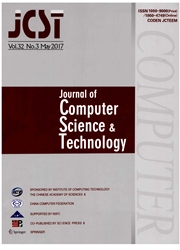

 中文摘要:
中文摘要:
白盒子的攻击是密码的软件在一个未信任的平台和实现详细说明的所有上被实现,这在被假定的新攻击上下文被攻击者控制。到目前为止,几乎所有白盒子的答案被打破了。在这研究,我们建议不是模糊存在的变体的一个白盒子的加密计划零但是一个完全新的解决方案。新计划象 ASASASA 一样基于失衡的 Feistel 网络(在哪儿一个工具仿射,并且 S 工具替换) 结构。它让可选的输入块缩放并且对因为空格要求慢慢地成长,与另外的解决方案相比保存空格合适(线性地) 与块尺寸的生长。而且,我们的计划不仅有巨大的白盒子的差异和白盒子的歧义而且有详细规格绕过公共白盒子的密码翻译法的建设技术,包括针对存在的白盒子的变体的攻击零和攻击对 ASASASA 特定结构。更多精确,我们在场关于等价物的白盒子的安全的一个定义调音,并且证明我们的计划满足如此的安全要求。
 英文摘要:
英文摘要:
The white-box attack is a new attack context in which it is assumed that cryptographic software is implemented on an un-trusted platform and all the implementation details are controlled by the attackers. So far, almost all white-box solutions have been broken. In this study, we propose a white-box encryption scheme that is not a variant of obfuscating existing ciphers but a completely new solution. The new scheme is based on the unbalanced Feistel network as well as the ASASASA (where "A" means affine, and "S" means substitution) structure. It has an optional input block size and is suitable for saving space compared with other solutions because the space requirement grows slowly (linearly) with the growth of block size. Moreover, our scheme not only has huge white-box diversity and white-box ambiguity but also has a particular construction to bypass public white-box cryptanalysis techniques, including attacks aimed at white-box variants of existing ciphers and attacks specific to the ASASASA structure. More precisely, we present a definition of white-box security with regard to equivalent key, and prove that our scheme satisfies such security requirement.
 同期刊论文项目
同期刊论文项目
 同项目期刊论文
同项目期刊论文
 期刊信息
期刊信息
